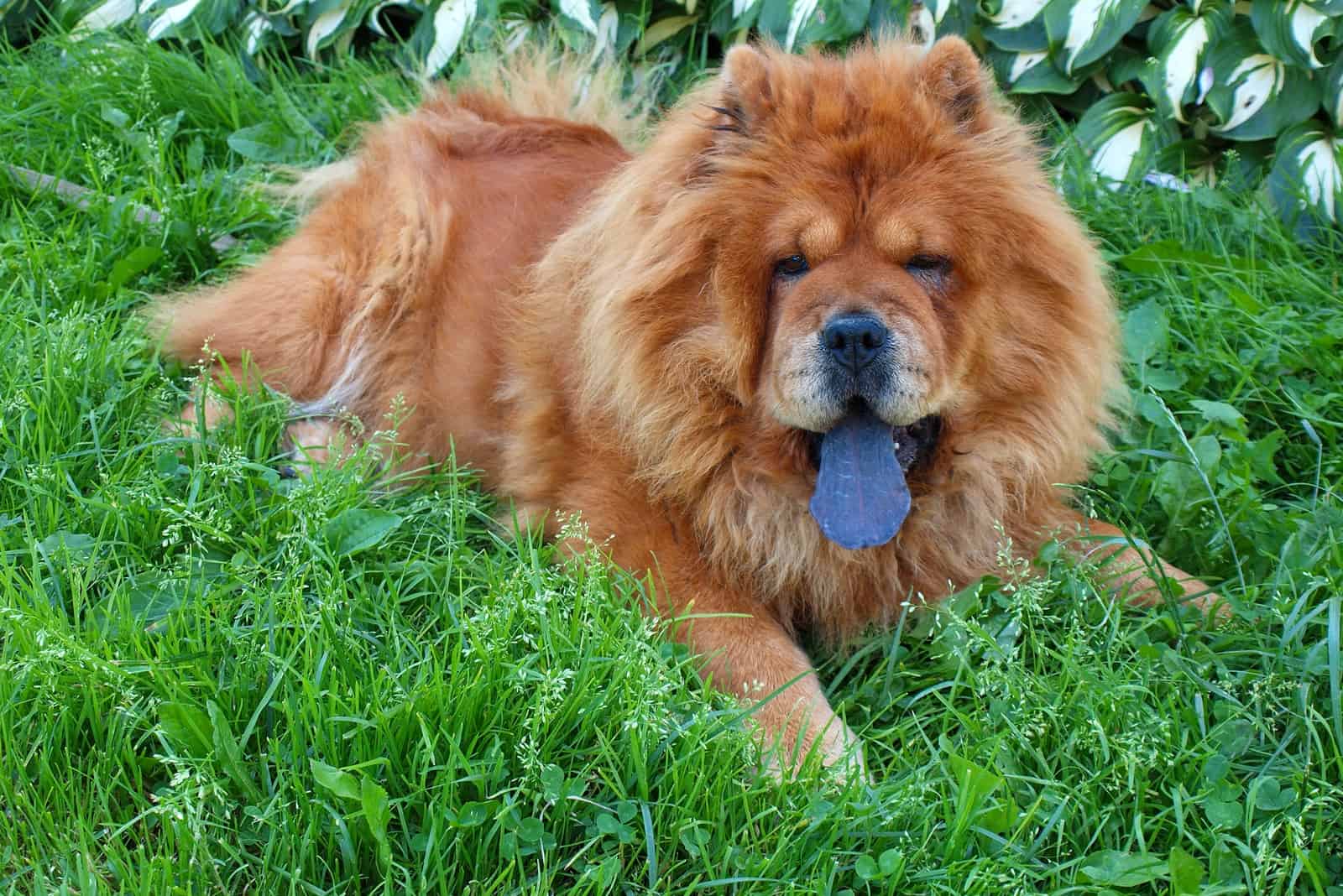The Chow Chow is one fantastic doggo who doesn’t need much maintenance and only requires a bit of an early effort investment to make him a great family pet, but to get there, one needs to follow the Chow Chow growth chart.
A Chow Chow growth chart may not be as necessary for professional breeders, but it certainly helps new dog owners familiarize themselves with the different stages of growth regarding their precious pooch.
It also serves as a good reference sheet on what level of growth is acceptable and allows you to tell whether something is wrong or not, even if it may not seem like that at first glance.
However, do keep in mind that these things aren’t infallible and that there is a margin of error, the values presented show an average range for all members of the Chow Chow dog breed.
After all, every dog has their own nuances and are rarely ever the same, if at all due to the many factors that factor into their upbringing as well as their genetics, diet and the like.
The values presented serve as more of a guideline than anything and should help set up a foundation from which to go off of and adjust throughout your dog’s life to what seems to work the best.
Professional advice from veterinarians and pet nutritionists will always trump general knowledge, so I advise you consult with them when trying to build a specific diet and lifestyle for your canine companion.
However, I’m here to help you figure a good amount of it out yourself so you can at least understand the fundamentals of this whole process for the Chow Chow specifically and it all goes.
To find out what the growth chart looks like in the first place as well as the Chow Chow weight chart and many of the other relevant information regarding your puppy’s growth throughout his life, be sure to read on.
The Chow Chow Growth Chart
[table id=659 /]
On this puppy weight chart, we can see how your dear doggo progresses throughout his puppy years.
His weight starts off quite big and amasses to a respectable 63-ish pounds on average for an adult male Chow Chow and around 47-ish pounds for an adult female Chow Chow.
We can see how it slows down immensely around month 9 and kind of caps out at the first year, a good indicator of your dog’s transition to his adult years.
His height does, in fact, top out at around the 9th month, but that doesn’t mean he’s stopped growing just yet, at least not in mass.
Somewhere between the 14th and 18th month is usually the time where all Chow Chows reach their adult weight and start becoming full fledged adult dogs.
Though, it does vary based on certain factors like genetics, diet and the amount of exercise your dog does in a day.
Throughout this period, the amount of food you’ll be feeding him increases gradually too, usually stagnating at the first year with slight fluctuations up and down due to the same reasons mentioned in the sentence prior.
That’s why the chart doesn’t really show anything past the puppy stage as nothing more drastic should happen in regards to growth and food for the remainder of your dog’s life aside from a slow decrease in the amount of food consumed.
That’s due to a slowing metabolism and it happens really slowly so you’ll have plenty of time to adjust his diet to a more balanced and healthy one and swapping out his kibble for a softer variety of dog food when he hits his senior years.
But, while his adult life may not be all that exciting in terms of growth, his puppy years certainly are. Lets see how it progresses from birth to the final months of puppyhood.
Chow Chow Growth Over The Years
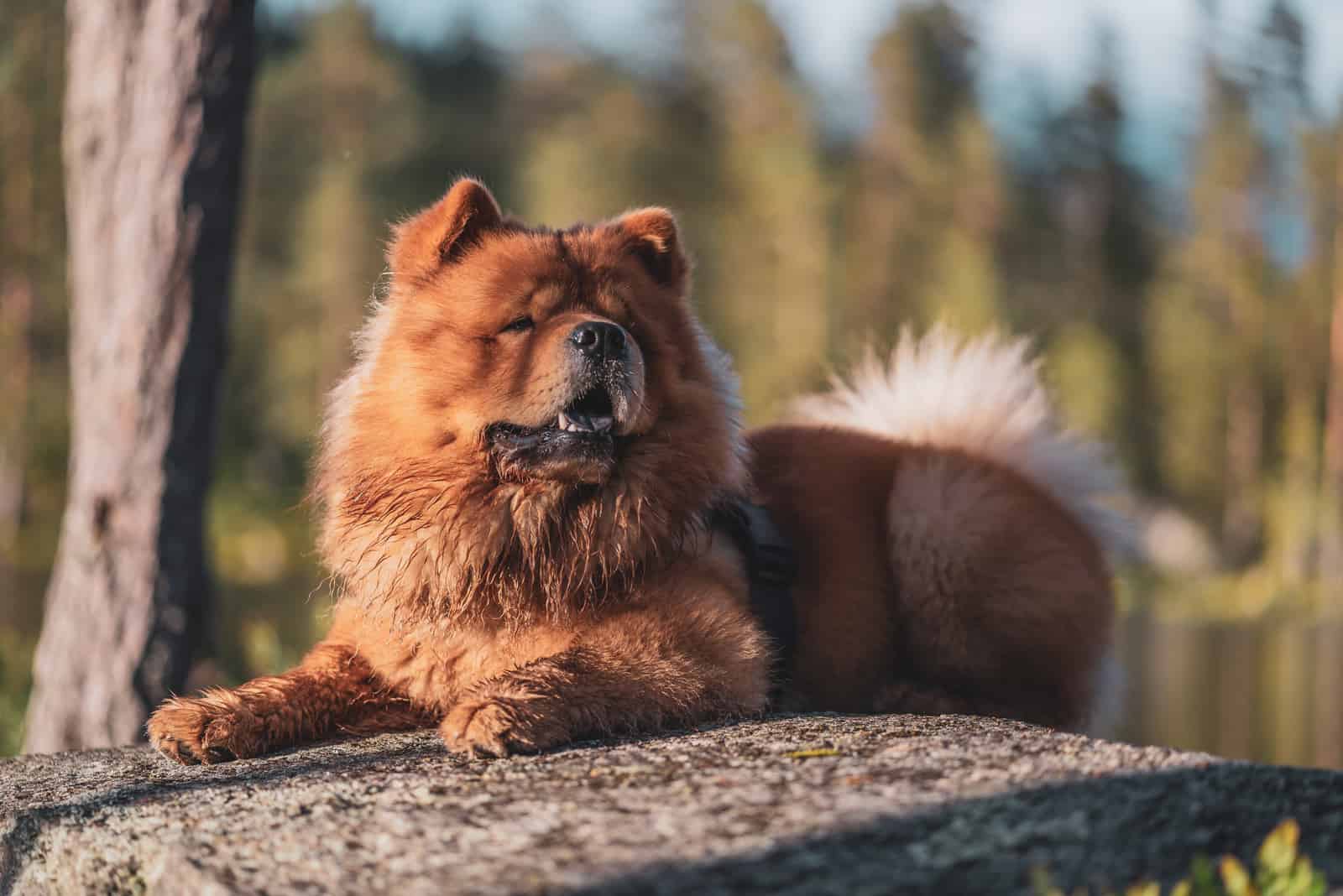
The major part of a Chow Chow’s growth happens in these first 14 to 18 months of his life and a good portion of that is related to what food he eats and how he eats it as well as exercise, two things that you can control and are responsible for.
The amount of both of these things will change over the course of his life, naturally, as will the forms that they take, be it different dog food brands, types of food or forms of exercise.
You want to get whatever keeps your Chow Chow puppy healthy to reduce those vet visits to a minimum.
Here’s what this process looks like:
0-2 Weeks Of Age
You’re not really going to find yourself too involved with the pup during these first two weeks as his mother will be doing most of the care regarding him, at least in terms of feeding and comfort.
You’re here to take good care of her and make sure she has access to fresh water and food so she can provide for herself and her newly born litter of pups.
The size of a Chow Chow puppy is relatively small, a pound or two, much like any other pup and they’re often fragile, but they do pack the pounds on fast, so be careful and track it as best you can so your dog doesn’t get overweight.
Should the mom reject one of them, you will have to step in as the secondary caretaker for a few weeks, providing him with an environment similar to that of a mother’s embrace.
This normally includes a heating pad and a nice, warm and fluffy area to sleep on. A rhythmic ticking noise is optional, but greatly welcome.
It reminds the dogs of the beating of their mother’s heart and would help calm them down if they’re feeling restless.
You’ll also need a milk replacement to feed them with until they’re developed enough and have gained enough weight to be able to swap over to puppy kibble.
3-8 Weeks Of Age
The period in which the breeder takes over the raising and training of the Chow Chow puppy. It’s where they’re starting to become more independent and moving away from their mother to investigate the world surrounding them.
It’s also the period where they’ll need to be weaned away from their mother’s milk in order to make it easier to rehome them without them refusing to eat the food given to them by their new owners.
That’s why breeders start getting them used to a specific brand of dog food for pups by gradually introducing it mixed in with water or milk and increasing the amount over time until it’s just the food itself and there’s no liquid to soften it up.
Usually it starts off as 3 parts liquid, 1 part kibble and progresses from there until the dog gets used to it.
It’s a skill that’s useful for dog owners later down the line too in case they need to swap out for new kibble for whatever reason.
Other than that, they’ll be receiving basic behavior and leash training. Some breeders may even start on their overall socialization to make them more family friendly.
8-12 Weeks Of Age
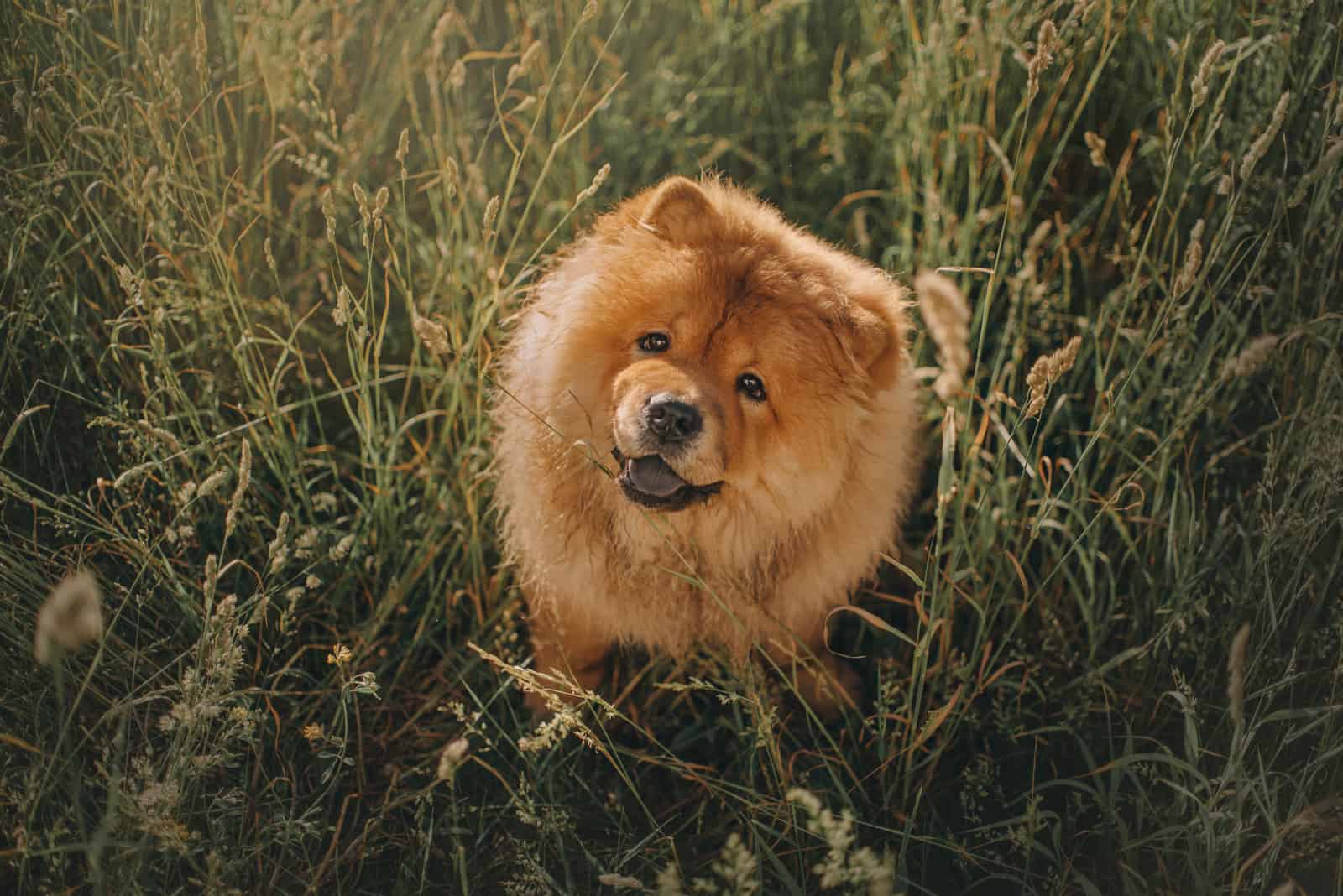
Around week 8 is when most pups are sold and rehomed to the previously designated owners, one of them being you in this scenario.
Once you get your doggo, it’s your time to become the caretaker.
Make sure he sleeps in a comfy environment and that you follow the breeders instructions if he had any, especially regarding the dog food brand used.
The weight of your Chow Chow will still be growing at a decent pace and you should keep a close look on it so you don’t over or underfeed your dog as both obesity and malnutrition are risky at this stage.
Other than that, you’ll want to continue his socialization with other dogs and your kids if you have any to get this proud and noble breed used to hanging around others and tempering his behavior to not be as wary as a Chow Chow normally is.
4-9 Months Of Age
This period is arguably the most active one in your dog’s puppy period as he’ll grow into a more limber size and, by the end of it, would reach the peak of his height without gaining all of the weight.
While a Chow Chow isn’t the most athletic of dogs, you’ll still find him waddling around the area and trying to explore as much as he can.
Given how active this period is, you’ll likely have to adjust his diet on the go, whether it’s adding or taking a little bit away from the suggested daily food intake.
It’s at this stage where he’s getting more used to the dry dog food that you should also be asking his veterinarian about his diet and whether it needs adjusting.
Make sure to keep his health in check as well and get him dewormed every 2 months or so, regardless of the result of his stool sample as a parasitic infection in this sensitive time could bring about long term problems.
By the end of this period, he would’ve reached his peak height, maybe getting an inch here and there in the following months, but mostly at adult levels.
10-18 Months Of Age
This period is already the point at where things start to slow down. Gaining weight is the only thing that really happens still as his height has peaked and his activity levels won’t really change too much.
They may subside a little as he puts some pounds on, but that’s about it.
The rest mostly revolves around balancing his diet and making sure he stays healthy as he gains weight.
By about month 14 to 18, you can already start moving him over from puppy food to adult dog food once he reaches the average adult Chow Chow size.
Adulthood (Month 14 – Year 7)
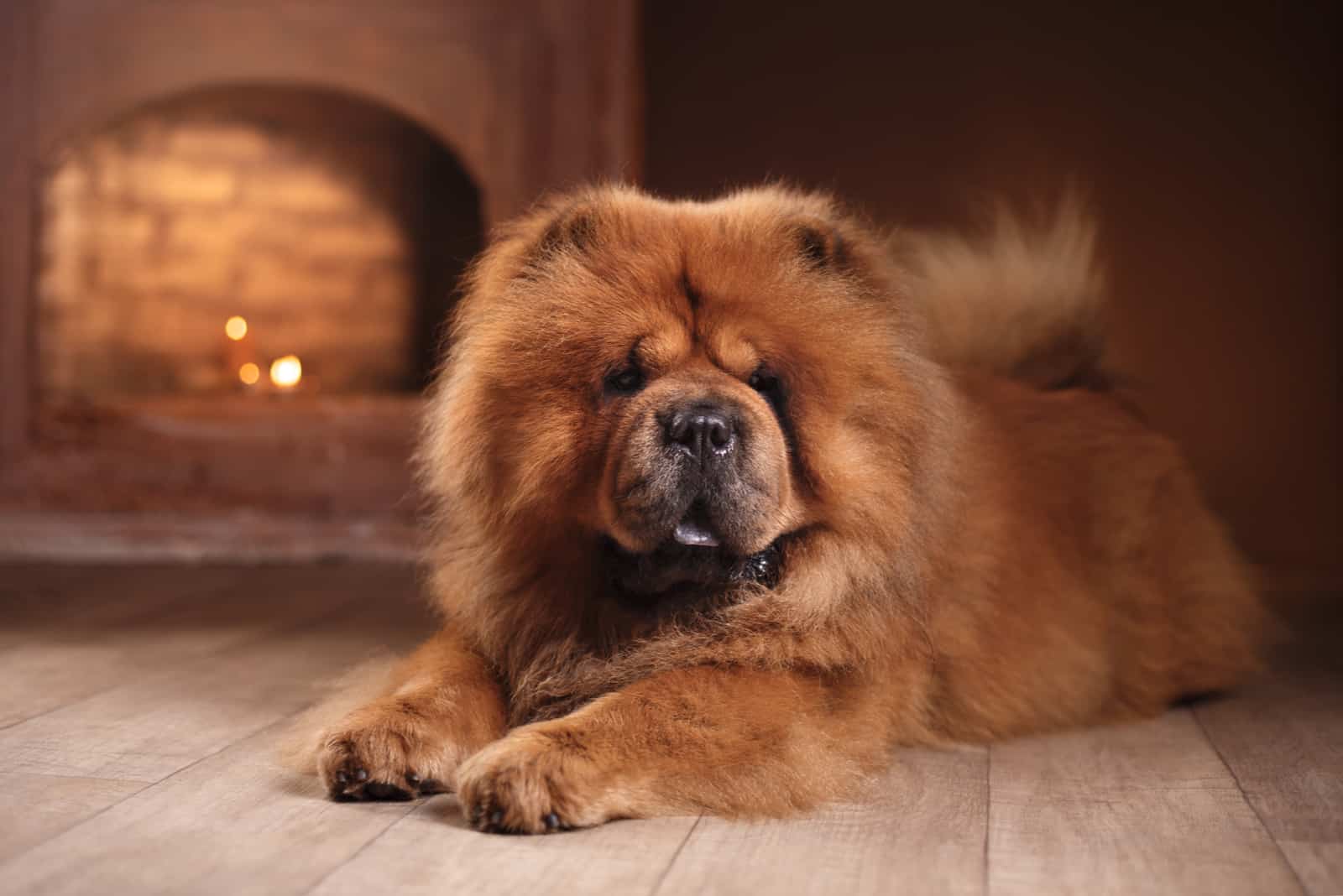
Now that we’re out of the puppy stage, you’ll find that your responsibilities won’t have you be as involved as you were during said puppy period, but you’ll still be doing the standard care needs that are expected of a dog owner.
The things you’re going to be looking out for now are any health issues that may spark up and making sure he gets enough exercise throughout the day, which usually boils down to two 30 minute to an hour long walks at most.
Make sure he keeps eating a balanced diet and doesn’t overeat to not get obese as it’ll cause a lot of problems in his senior years, especially with his bones and joints.
Aside from that, you won’t need to do more than reduce his food intake the closer he gets to year 7 and his senior years.
The Senior Years (Year 7 And Onward)
The final stretch of a Chow Chow’s lifespan usually lasts anywhere between 2 to 8 years, depending on his health thus far and his genetics.
The first thing you’re likely going to be doing here is swapping the food out for something softer and better suited for old dogs to digest and swallow with ease.
Of course, you’re free to continue on using the stuff you’ve been using ever since he turned into an adult, but should you spot any difficulties with his digestion, I advise doing the transition.
As with his initial swaps, the gradual introduction of the food is best as it’ll get him used to it through a more familiar medium.
How Big Do Chow Chows Get?
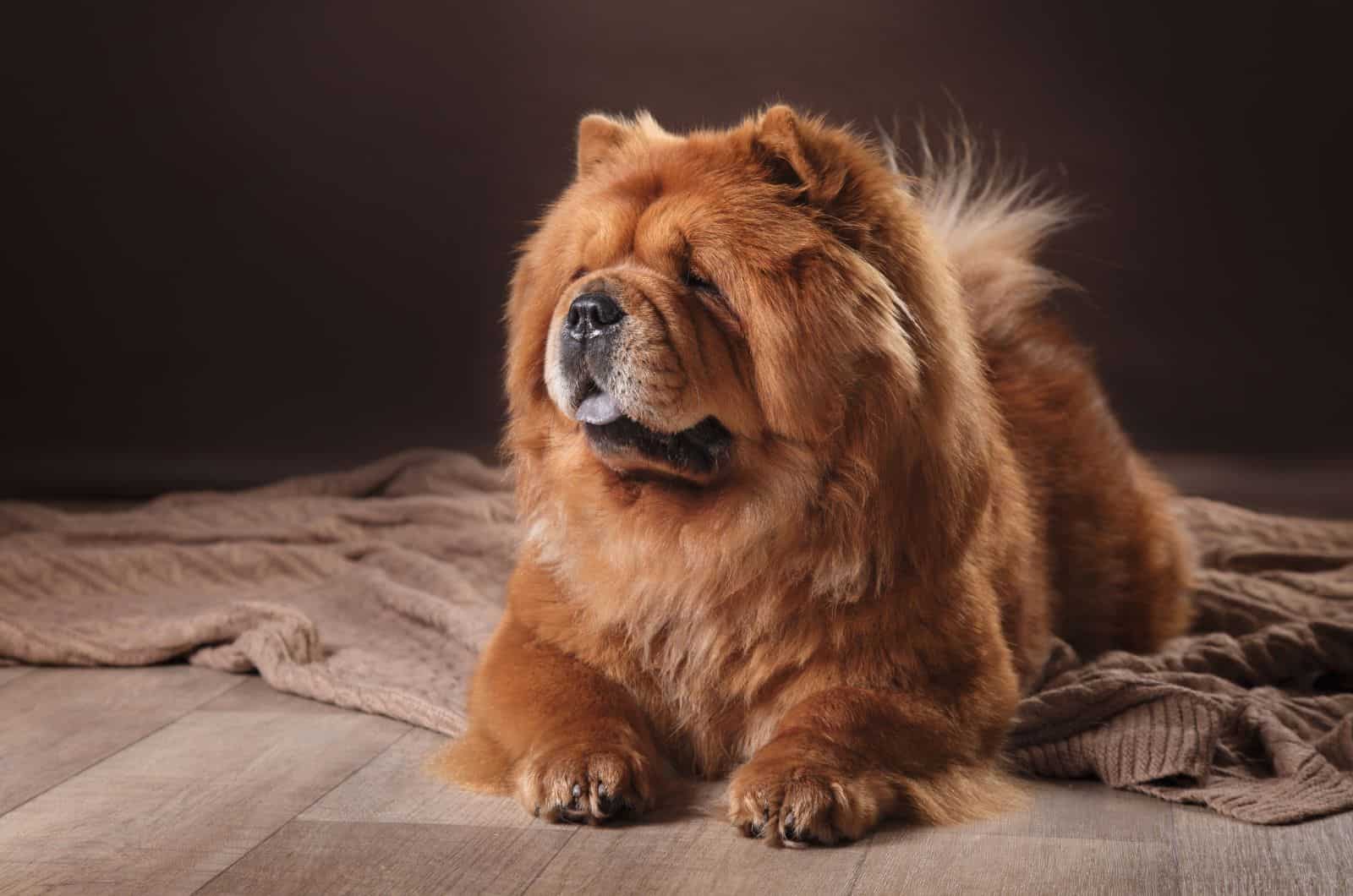
The Average Chow Chow will usually grow to about 17 to 20 inches in height, and about 52 to 75 pounds weight wise.
He’s considered a medium dog, albeit his weight would suggest him to be a large dog, but he’s missing a few inches to quite reach into that category.
To figure out how big your own dog will get, you can also take a DNA test which can help you figure it out, but they’re not always the most reliable method.
Is There Any Difference Between Male And Female Chow Chows?
Of course, males are about an inch or two taller than females and are around 10-20 pounds heavier than them.
The difference may not sound like a lot, but it’s pretty distinct when you put one up against the other.
What Affects A Chow Chow’s Growth?
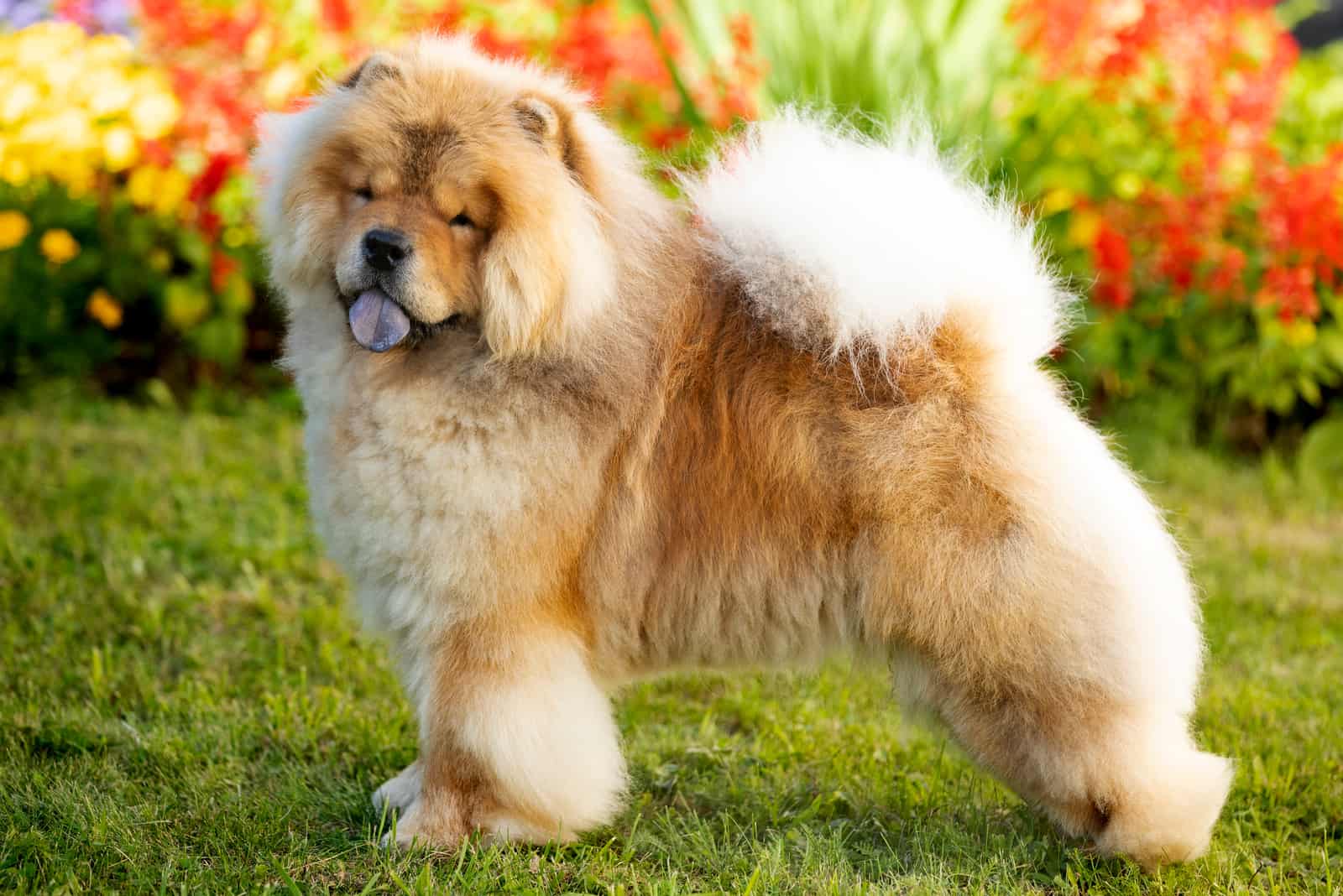
The puppy growth chart, as we’ve already discussed, is not going to be completely accurate for every dog.
There are certain elements in a dog’s growth that will shift this natural progression for better or for worse.
That’s why the right height or the right weight is never really recommended and is instead given in these ranges which can also be wrong in extreme cases.
It can’t account for everything, however, here are some of the most common factors which affect both height and weight gain:
The Genetics
The first and foremost culprit for anything good or bad that may happen with your dog’s body.
Genes are responsible for almost everything in a body that comes naturally, or at least its foundation, from fur color, size, the speed of one’s metabolism, allergies and intolerances, and more.
It’s no different with dogs than it is with humans really. For instance, if your dog came from naturally smaller parents, then he has a predisposition to also grow to be smaller than expected, but doesn’t have to.
That’s why I keep saying that every dog is born different and that none of them will ever live the same lives.
Some of these issues like a slower metabolism can naturally be combatted through small lifestyle changes like reducing the dog’s daily calorie intake.
It won’t hurt him as he has a different standard than other dogs, so if he needs more or less calories, it doesn’t make him any less of a dog.
Just make sure that he’s getting proper nutrition and lots of love and he should be just fine in your care.
What He Eats
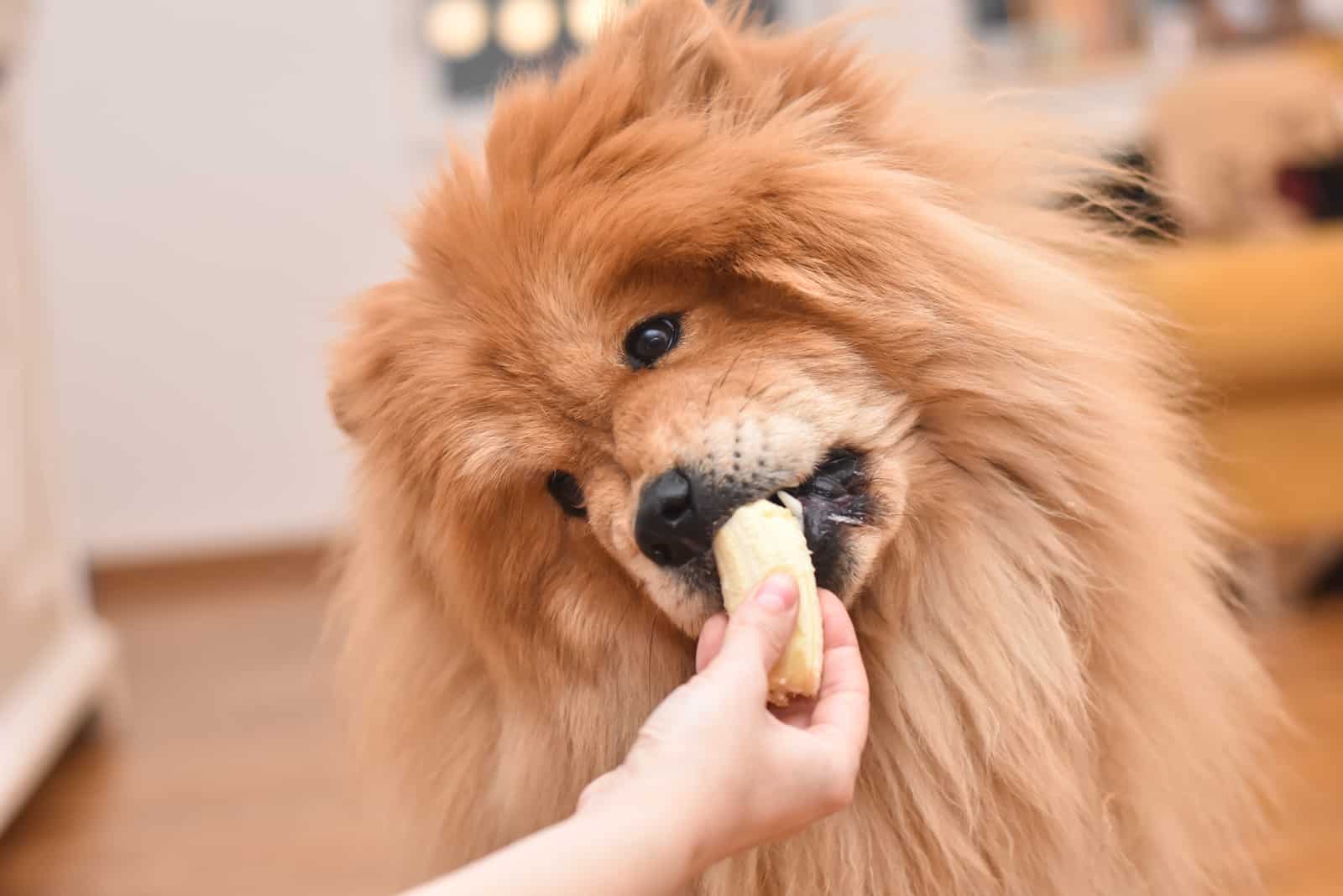
Obviously, a dog’s diet is going to affect the rate at which he grows and in which way he grows in, height or weight.
Maintaining a healthy and balanced diet for your dog is crucial to a long and healthy life, something that you’ll be able to curate properly with your local vet or pet nutritionist after a few months.
However, you can get a good head start on it by simply consulting with the breeder or sticking with the basics.
As a puppy, it’s important that he gets all of the nutrients and minerals that he would need for his regular development.
The first and foremost nutrients needed are DHA and EPA, crucial for proper cognitive development.
Phosphorus and calcium are important for the more physical side of his development, his bones and joints mainly, especially considering most medium and large dog breeds are more prone to bone and joint issues the older they get.
Chow Chow’s are extremely prone to issues regarding their eyes, so putting a source of vitamin A and E into your dog’s diet is going to prove extremely beneficial for him too.
His immune system and digestion need to be improved too, so food stuffed with prebiotic fiber and probiotics will do wonders for his intestinal flora. Antioxidants are welcome as well, but not as needed in the puppy stages.
You can start focusing on those once the dog’s age passes over his first birthday.
Aside from that, there are different diets to think about that other purebred dogs like the German Shepherd, Golden Retriever, the Tibetan Mastiff and the like enjoy like raw diets, but those aren’t really safe for consumption for a dog like the Chow Chow.
They’ve been raised to eat very little meat so their digestive systems would get overloaded as such. They’re more adaptable to other diets, ones with a more varied palate than just relying on meat in case you want to divert from just the kibble.
And, honestly, sticking to dry dog food is likely the best as a norm as maintaining a healthy weight is a lot easier with proper portion control, especially since most bags have feeding guides printed on them.
They’ll let you know how much a dog of a specific weight should be eating as not every dog food brand has the same caloric content per cup.
How Much He Exercises
While not the biggest influence in a Chow Chow, given how little exercise he needs, it’s still a core part of every dog’s health and overall growth.
Lower activity dogs usually need less calories in their food to be able to meet their daily nutritional needs as they don’t need to burn as many.
On the other hand, dogs who require a lot of exercise will obviously require more to be able to grow.
When he’s a pup, however, given how much he eats, he’ll need to get his daily exercise in to be able to build some muscle.
Make sure it’s light as Chow Chows are brachycephalic, much like pugs or bulldogs meaning they have a hard time breathing at any point in time so you don’t want to tire them out too much to avoid potential problems.
See Also: Help! My Dog Sounds Congested, What Should I Do?How Fast Does A Chow Chow Grow On Average?
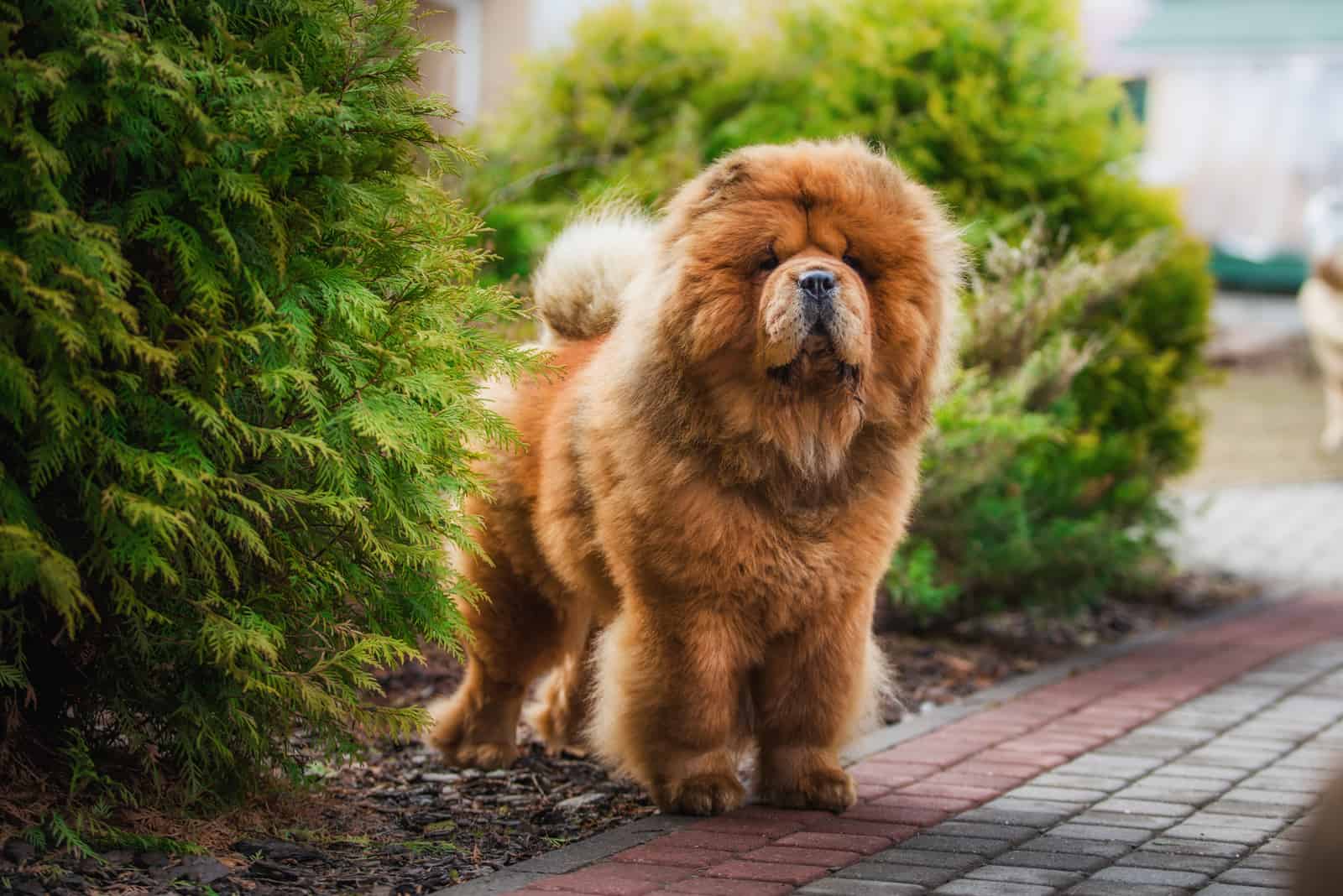
As mentioned before, Chow Chows reach their maximum height at around 9 months of age while reaching their adult weight around the 14th to 18th month. The initial growth in size is pretty rapid while the weight simply booms out from month 4 and onward.
FAQs
How Much Do Chow Chow Puppies Need To Eat Daily?
In order to grow at a healthy rate, a Chow Chow pup should consume around 2-3 cups per day, all sorted out into smaller portions to teach him about pacing himself.
You don’t want him eating too fast or taking big gulps of food too quickly as that’ll cause his stomach to distend and could end up causing bloat which isn’t pretty.
Giving him smaller meals, but more frequent ones helps remedy that pacing issue and keeps his digestive system working at a steady pace too, allowing it to digest the food before shoveling more in.
What’s The Proper Method To Swap Dog Food Brands Up?
While it was touched upon earlier, I’ll explain it in a bit more detail.
The method is simple, but highly effective.
You take 3 parts of the current dog food your dog is eating the most commonly and you add one part of the new.
It’s a simple method of gradual introduction. Your dog won’t notice too much of a difference and will still happily eat what you present him with.
Then, after a few portions, you can slowly tilt the ratios in favor of the new stuff until it completely replaces the old, however, your dog won’t notice that much of a difference and you would’ve succeeded.
That said, a number of dogs don’t even need to rely on this technique and can easily swap between kibble options, maybe you won’t have much of an issue after all.
Does Neutering Or Spaying Affect The Chow Chow’s Size At All?
It won’t in most cases, it won’t, but if done while the dog is still too young, it may affect his joint growth and could mess it up a little.
The best advice from experts and dog lovers all over the world is to wait until your dog reaches adulthood or at least stops growing to perform the procedure.
In order to know that, I suggest asking your vet about it. They’ll be able to provide you with the correct information and will be able to inform you about the process in a bit more detail.
The reason why is because the hormones produced by the dog’s reproductive organs play a small part in aiding in his growth through the open growth plates.
You have to wait until they close for it to be deemed safe to neuter or spay your dear doggo.
For Chow Chows, that’s anywhere between 6 to 9 months of age usually, with the period closer to month 9 being the safest option, in my opinion at least.
What’s The Average Lifespan Of A Chow Chow?
The average Chow Chow will live anywhere from 8 to 12 years depending on how healthy and lucky he is.
Those who have a healthy and balanced diet and who exercise as often as they can given their genetic defect of brachycephaly can go all the way up to 15 even, though it is rare.
A more accurate measure of what people normally expect for this breed is 10-12 years if they don’t get any problematic diseases and are kept healthy.
What Are Some Of The More Common Health Issues Regarding The Chow Chow?
We’ve mentioned a few in passing, but it’s better to have them all in one place.
Here are the most common problems that a Chow Chow can face in regards to his health.
Bone And Joint Issues
Any medium or large dog is a common victim of worn out bones and joints which cause an annoying discomfort for them.An unfortunately unavoidable problem given the dog’s skeleton and the way it’s constructed, but not one whose effects can’t be mitigated.
The main problems stem from hip and elbow dysplasia as well as patellar luxation.
These can develop at any point of a dog’s life, so do be careful and keep an eye out to see if your dog is in pain or seems to be walking funnier than usual.
Issues With Their Eyes
Entropion and glaucoma, the two main problems Chow Chows face when it comes to their eyes.They’re not particularly dangerous if found out early, but it’s wise to get any irregularities around the eyes checked so it doesn’t develop and cause any further damage to it.
Bloat
A problem that often comes up when your dog either eats too much too fast, or doesn’t chew his food.Anything that would distend the stomach and would then lead to its contraction, however, it would contract in such a way that it tangles around itself and traps fluid or gas inside itself and cuts off blood flow to other organs.
Given the description, I believe it’s apparent as to just how dangerous this can be if not treated as soon as possible, even fatal.
Get your dog to a vet quickly so the issue can hopefully be resolved.
While treatment options are readily available, I do suggest teaching your dog how to pace himself properly so this doesn’t happen at all if possible.
Intestinal Parasites
While not the deadliest, the worst thing that one can deal with in terms of health problems are parasites, especially those in young pups.These things come into the digestive system through contaminated food or ingestion of foreign material by the dog, latching on and then taking most of the nutrients provided by the food that enters in after it has made its home inside the dog.
This, in turn, leads to lethargic movements, nausea, vomiting and diarrhea, and rapid weight loss as just some of the many indicators.
If you see this happen, take your dog or his stool sample to a vet immediately to have it checked for worms.
If it comes out positive, you’ll know it for a fact and can then take your doggo to get dewormed for his safety.
Obviously, parasites like the ringworm, hookworm and the tapeworm can cause severe damage during your pup’s growth if it’s left to run rampant for too long without any treatment due to a lack of nutrients so be sure to report it as soon as you suspect it.
It’s good practice to get your puppy dewormed every 2 months or so until he reaches adulthood, this way you ensure that he’s pest free for most of the time, though they can still find their way in so don’t drop your guard.
Difficulties Breathing
Given the dog’s brachycephalic nature, this is something he’ll struggle with all his life due to poor breeding practices in the past.The best way to mitigate the effects of it is to not put your dog under too much physical strain and allow him to rest, but still making sure he gets some time for walkies each day.
Thyroiditis
The final problem is related to the dog’s thyroid gland, another condition that isn’t particularly fatal, but can leave the dog more prone to more fatal issues like heart disease.Not much that can be done about it aside from treatment once it starts to flare up.
In Conclusion
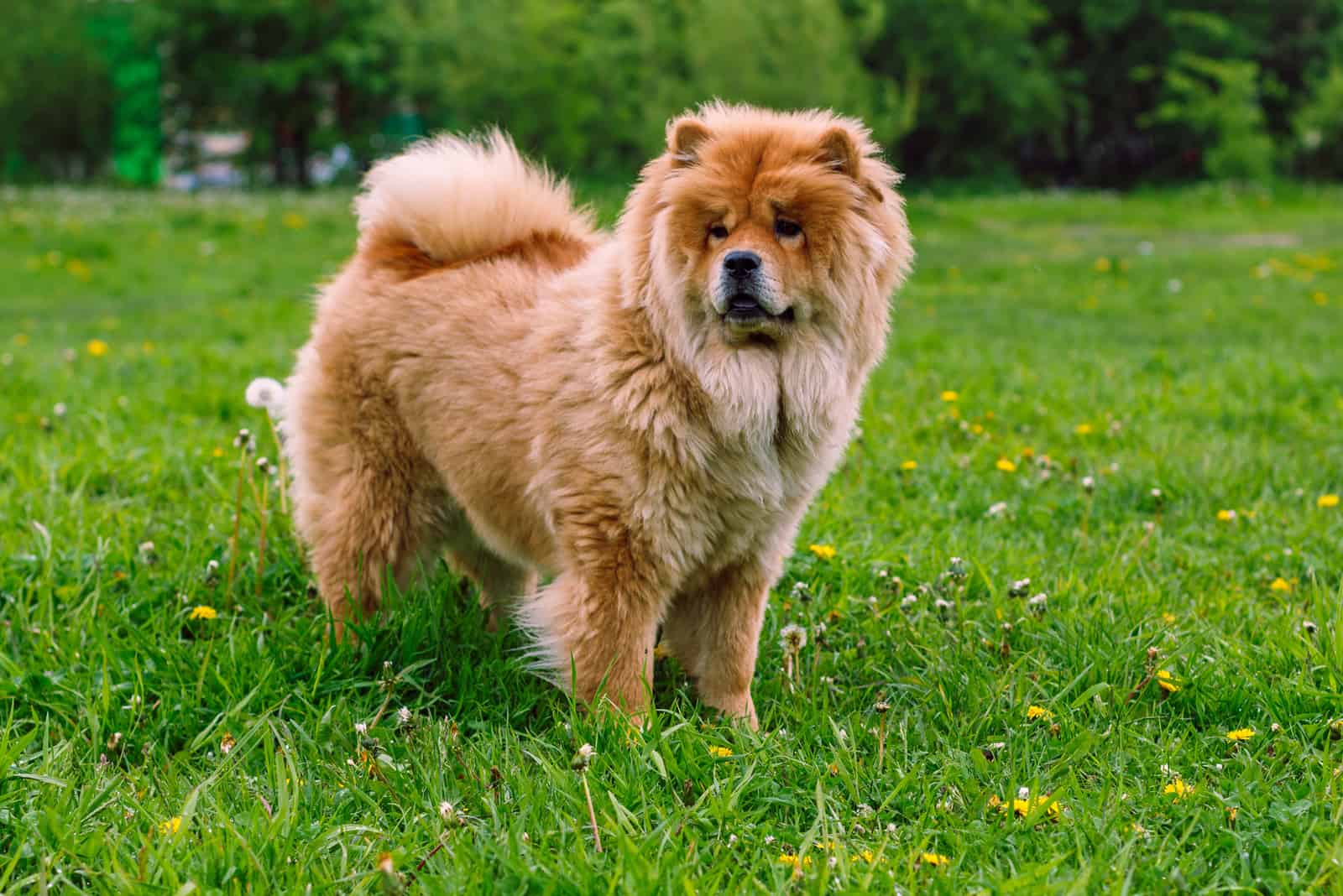
A Chow Chow growth chart is a good reference point to look back on when you have to raise your pup up from puppyhood throughout the rest of his life, especially for newer dog lovers.
It’ll show you the average weight and height ranges for them at key points throughout their puppy period, ones that you can use as an estimate of what is acceptable and what is deemed obese or underweight.
While you can go a few pounds off the recommended ranges, try to get it between the lines if you can as it’ll mean a lot to your doggo.
Do make sure to give him enough daily exercise and to feed him a nice, Chow Chow friendly diet and he’ll be your loving companion and family dog for as long as he’s around. Until next time.
RELATED LINKS:
- Mini Chow Chow — The Miniature Teddy Bear Dog
- Top 4 Chow Chow Breeders In Ontario
- Chow Chow Weight Chart: How Big Will My Chow Chow Puppy Get?
- 210 Popular Chow Chow Names For An Adorable Lion Pup
- How Much Does A Chow Chow Cost? Puppy Price And Expenses
- 8 Unique Chow Chow Colors: A Guide To Rare Patterns
- Male Vs Female Chow Chow: Who Will Win This Battle?
- Do Chow Chows Shed? Grooming Advice For Chow Chow Owners
